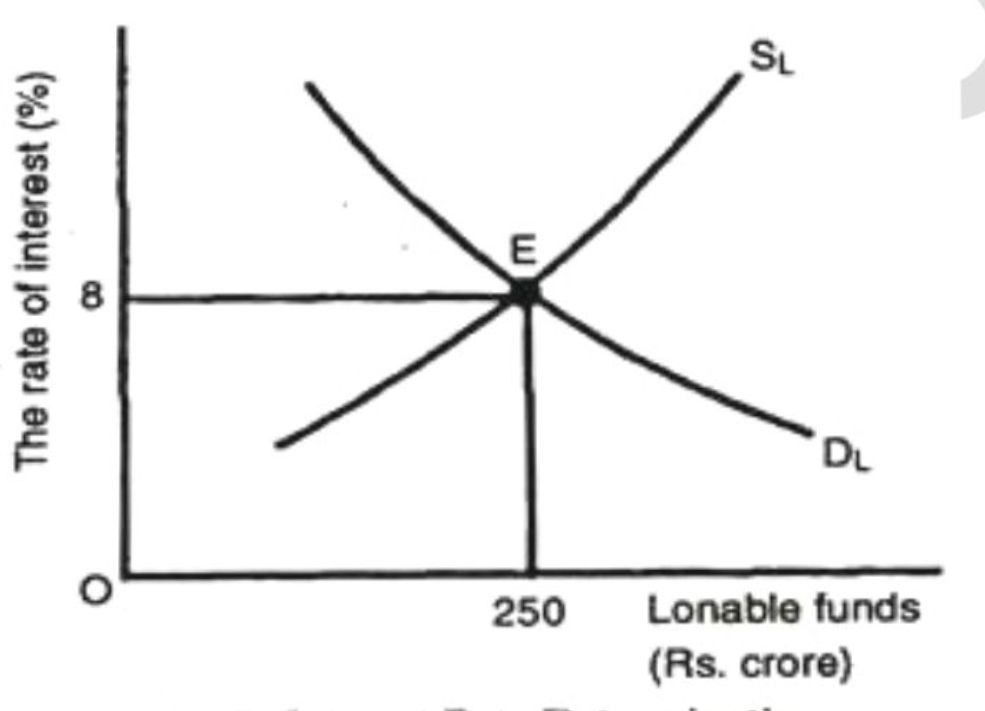Introduction:
According to classical economist the rate of interest is the price paid for the use of capital. Loanable funds theory is an improved from classical theory. According to this theory rate of interest depends upon the supply of and demand for lonable funds. Thus the equilibrium rate of interest would be at the level where quantity supplied and quantity demanded of lonable funds would be equal. The explanation of loanable funds theory is
THEORY:
Demand for lonable funds come from investors, customers and hoarders. demand from investor is the most important constituent of the total demand for lonable funds and it is guided by profit Motive. demand from consumer arises due to low level of current income but this demand is very less sometimes people demand lonable funds for hoarding purpose also.
Supply of lonable funds come from savings, bank credit, disinvestment and dis hoarding. the largest source of supply of lonable fund is savings, bank generate supply of lonable funds through credit creation, dishoarding means that when past accumulated savings and idle cash balances which were hoarding earlier are now offered in the capital market for loan purposes. when firm thinks that the capital investment in machines and factories is not profitable and bring it to capital market for giving loans is called disinvestment.
The rate of investment is determined at a point where man for demand for and supply of lonable funds are equal this is explain by the following table and diagram in the figure.
| Interest rate in % | Demand for lonable funds (RS) | Supply of lonable funds (RS) |
| 11 | 12000 | 8000 |
| 12 | 11000 | 9000 |
| 13 | 10000 | 10000 |
| 14 | 9000 | 11000 |
| 15 | 8000 | 12000 |

- D is the demand curve of the lonable fund.
- S is a supply curve of lonable funds
- E is the equality between D and S.
- the rate of interest at this level is O8
This theory is an improvement over the classical theory because it takes into account bank credit and also recognize the role of loaning or liquidity preference as a factor influence in the demand for funds.
also read: explain the concept of quasi rent.